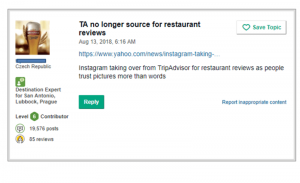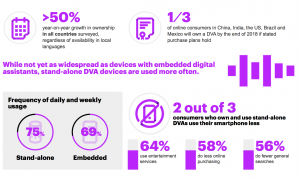HR evolution through this decade is stunning; it transformed from a department in a company with the responsibility to recruit, train and manage employees to a complex system. This system is responsible for professionally advancing employees, helping bring their best work and maintaining upbeat morale. The new approach is triggered by the worldwide talent, and skills shortages felt most severely in IT and cybersecurity sectors. These shortages bring a fresh look at the employees as not just workers but as customers. HR strategies steadily embodied the mindset of worker development more than worker management (in its narrow sense). Talent shortages and competitive environment made the introduction of new digitized HR systems and technologies necessary. Digitization has been as beneficial as any other systems-innovation in improving HCM (Human Capital Management) and enabling companies of different sizes to compete on global markets.
Trends in HR: departmental interaction
Accenture Technology’s report identified multiple trends in digitizing HCM systems. Use of Saas solutions is becoming so widespread that the line between HR and IT departments is becoming blurry. HR professionals are not required just to know how to use HCM solutions, but be able to customize and make changes to it. This process is enabled by the introduction of user-friendly HCM solutions, improved collaboration between teams and higher departmental flexibility. The inclusion of the HCM software and interdepartmental collaboration helps improve the HR strategy. The quality of HR strategy grows because the information is better diffused on multiple levels of an organization. Improved informational diffusion and increased flexibility of the organizational systems allow for quick iteration of HR strategy. Quick response promotes change that fits fast paced HR environment the best.
Digitalization of organization’s internal systems, global environment, and societal interaction norms, made a strong digital HR strategy a must. Corporate communication and branding became a core aspect of inbound HR strategy as 79% of job seekers use social media in their job search and even more people in the younger job seeker group. This trend causes the increase in interdepartmental communication, where marketing and HR departments have to work hand-in-hand to target top talent and occupy a favorable position in the eyes of prospective employees.
Tools: present and future
Content marketing tools
It is important to address internal and external environments to create an HR strategy that increases the quality of hiring and improves employee satisfaction. In order to make HR’s interaction with the changing external environment fruitful, content marketing tactics should become a part of HR strategy. Quality content marketing campaigns will help HR departments attract top talent, as millennials actively use social media platforms in the job search. Facebook, Google, and LinkedIn are the most notorious for their ability to cater to the right prospects, but the content itself is as important as the platform. The trend of visual content marketing is starting to dominate the field as people prefer it over text.This means that companies should hire quality content makers of animation, illustration, or graphic design, which help create visual content that represents company’s values and engages public in an interactive manner. For example, external applications could be used to create animated educational videos that advance employee onboarding process.
Software tools
To improve internal HCM system, digital tools that simplify internal HR tasks and pipeline are important. Software solutions for this purpose vary, they can be task specific (Payroll, Performance review, Report writing) or all-in-one HCM solutions. New external digital environment and internal software tools help improve the quality of HR systems because they necessitate employee oriented change.
Tools in the future
With the advancement of AI systems, the process of prospecting is going to be further automated. This helps HR departments as well as job seekers. In the long term, digitalization would disrupt HR systems and allow HR specialists to focus on a personal approach towards employees. The technology will not only optimize the matching process but would allow spotting inefficiencies in the HR strategy, based on employee turnover, reports, and other qualitative metrics. Eventually, HR strategy will be tied directly to other departmental activities, and machine analysis will be dictating inefficiencies in company’s positioning, content creation, and employee relations. Expert AI would help adjust strategic shortcomings and create robust HR strategy that puts employee satisfaction first and achieves institutional goals.
Conclusion
Companies that strive to be competitive cannot ignore digitalization that is shaping the new HR reality. Talent shortage could be addressed with a digitized HR strategy. The digitized strategy focuses on improving content marketing efforts, which erases strict departmental boundaries. Digital solutions help make payroll, onboarding and reporting processes faster and easier. Future trends are even more technology-oriented; they would help solve the manual work of HR professionals. Future is digital, and so is HR, is your company ready for it?
Business & Finance Articles on Business 2 Community(98)
Report Post





